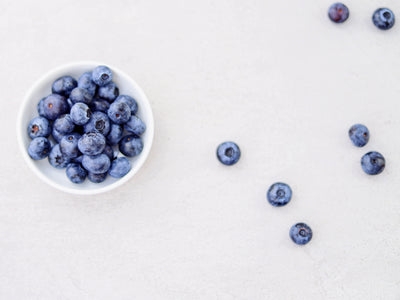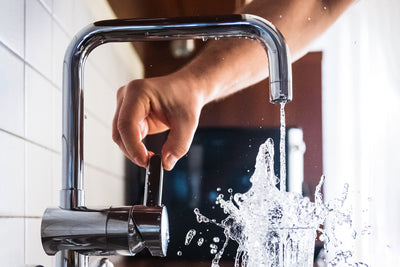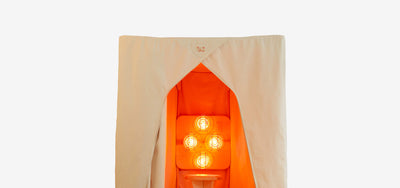How To Reduce Your Body’s Toxic Load: Part 4

CONSCIOUS SPACES DETOX SPECIAL
In the New Year spirit of fresh starts and clean slates, we’re serving up a rejuvenating detox special: a series of features focused on what contributes to your toxic load, and – most importantly - practical, positive advice on ways you can work to dramatically reduce it, with almost immediate effect.
Tactic Number Four:
Have a plastic purge and say no to non-stick
1. The main offenders: Phthalates and BPAs
Harmful chemical components of plastic can leak out of containers and into whatever is stored inside, silently but steadily contributing to your body’s toxic load.
Phthalates are man-made chemicals found in plastic food packaging, plastic lunch boxes, plastic food wrap and plastic medicine capsules. They’re mostly used to make plastics more malleable and durable, as well as to thicken lotions and dissolve fragrance in beauty products.
Whilst they might improve the flexibility of plastics, phthalates are also confirmed endocrine disruptors, and have been linked to decreased fertility, (1) diabetes, (2) breast cancer, (3) childhood obesity (4) and asthma. (5)
Released by heat and wear, phthalate molecules find their way into our bodies when absorbed through skin or swallowed. Scientists, like CDC phthalates expert Antonia Calafat, are now warning (6) that we simply "don't have the data in humans to know if the current levels [of phthalate exposure] are safe.”.
Many plastics, including those used for water bottles and single-use food packaging, also contain bisphenol A (BPA), a chemical that has been shown to disrupt hormones and affect fertility, with pregnant women who are exposed to BPA more likely (7) to have children with growth and behavior problems, as well as a higher cancer risk.
Now, a new study (8) has found that we’re being exposed to 44 times more BPA than previously thought - far exceeding recommended ‘safe’ levels.
2. Safer storage solutions
To reduce your exposure to toxic plastic components like phthalates and BPA, always store your food and drinks in 100% stainless steel, ceramic or glass.
Not only are these alternative storage solutions non-toxic, they’re also a lot easier on the eye. Instead of a mishmash of tattered packaging, you’ll be able to clearly tell when you’re low on supplies just from opening your cupboard doors and admiring your streamlined system.
If you take your lunch into work in a plastic lunchbox, why not switch to a stainless-steel version? They’re strong, clean, brilliantly useful and built to last.
Avoid eating food or drink that comes pre-packaged in single-use plastic wherever possible, and carry a stainless-steel reusable water bottle to fill up safely on the go.
Caution should also be exercised with tinned foods, which are sometimes lined with BPA-containing resin. If in doubt, look for products specifically labeled as BPA-free.
Try natural alternatives to Clingfilm, such as beeswax wrap. Made from cotton coated in malleable beeswax, beeswax wrap is not only free from industrial chemicals, it’s also washable, reusable – and compostable. If you’re a strict vegan, non- GMO soy wax versions are available too.
Surprisingly, receipts are also often coated with BPA. To limit your exposure even further, have your receipts emailed to you rather than printed from the till.
3. Try a plant-based toothbrush
Plastic toothbrushes are bad for the planet and not so great for your toxic load either. A depressing 4.7 billion plastic toothbrushes end up in landfill every year, with others making their way into our oceans and ecosystems where they slowly break down into invasive microplastics. Your plastic toothbrush also contains a hefty dose of phthalates; a chemical linked to asthma, childhood obesity, breast cancer and fertility issues (as mentioned above).
Try using a plant-based brush instead. There are lots of sustainable and natural options on the market, such as those with organic bamboo handles and castor bean oil bristles.
4. Milk it
If you drink milk, try taking it in a returnable, reusable glass container instead of the standard plastic bottle. Making your own plant milks – such as coconut milk or nut milk – which you can then store in a glass canister in your fridge, is also easier (and more fun!) than it might sound, and the internet is packed with easy tips and recipes to help you DIY.
5. Be wary of non-stick
The non-stick coating on cookware that stops your scrambled eggs from burning may be contaminated with (9) man-made perfluorinated chemicals (PFAs) used in its manufacture.
One such substance, Perfluorooctanoic acid (PFOA), has been linked to a number of health conditions, (10) including infertility, (11) thyroid disorders, (12) testicular cancer (13) and chronic kidney disease. (14) Worryingly, PFAs are found in (15) most people’s bodies.
Look instead for cast-iron and stainless steels alternatives. There’s a reason why a traditional Le Creuset pot is the French cook’s cauldron of choice! Not only do cast-iron pots look the part, but they last a lifetime and are super-versatile, withstanding temperatures far higher than those considered safe for non-stick pans. Stainless steel, meanwhile, is ideal for sautéing, dishwasher safe, durable and scratch-resistant.
If you already have a non-stick pan, don’t panic – as your potential exposure to PFSAS will likely be minimal, but do take care in how you use it. Don’t overheat it, as this can increase the release of toxins. When cooking with non-stick, make sure the temperature stays well below 260C/500C, and keep your kitchen well ventilated to help clear any fumes. Use wooden utensils and ditch your non-stick pans immediately if they show any signs of peeling, flaking or surface scratches.
Chemical non-stick and anti-stain coatings are also found on the inside of popcorn packets and pizza boxes, so you might want to think twice the next time you’re tempted to scrape off that last strand of melted cheese.
References
(1) https://www.ncbi.nlm.nih.gov/pubmed/22197707
(2) https://www.ncbi.nlm.nih.gov/pubmed/22498808
(3) https://www.ncbi.nlm.nih.gov/pubmed/28951174
(4) https://www.ncbi.nlm.nih.gov/pmc/articles/PMC4114051/
(5) https://www.ncbi.nlm.nih.gov/pubmed/20059582
(6) https://www.nationalgeographic.com/science/health-and-human-body/human-body/chemicals-within-us/
(7) https://www.thelancet.com/journals/landia/article/PIIS2213-8587(19)30381-X/fulltext
(8) https://www.thelancet.com/journals/landia/article/PIIS2213-8587(19)30381-X/fulltext
(9) https://www.healthline.com/nutrition/nonstick-cookware-safety#section3
(10) https://www.ncbi.nlm.nih.gov/pubmed/23079607
(11) https://www.ncbi.nlm.nih.gov/pubmed/19176540
(12) https://www.ncbi.nlm.nih.gov/pubmed/20089479
(13) https://www.ncbi.nlm.nih.gov/pubmed/24007715
(14) https://www.ncbi.nlm.nih.gov/pubmed/21873601
(15) https://www.theguardian.com/us-news/2019/may/22/is-modern-life-poisoning-me-i-took-the-tests-to-find-out











































